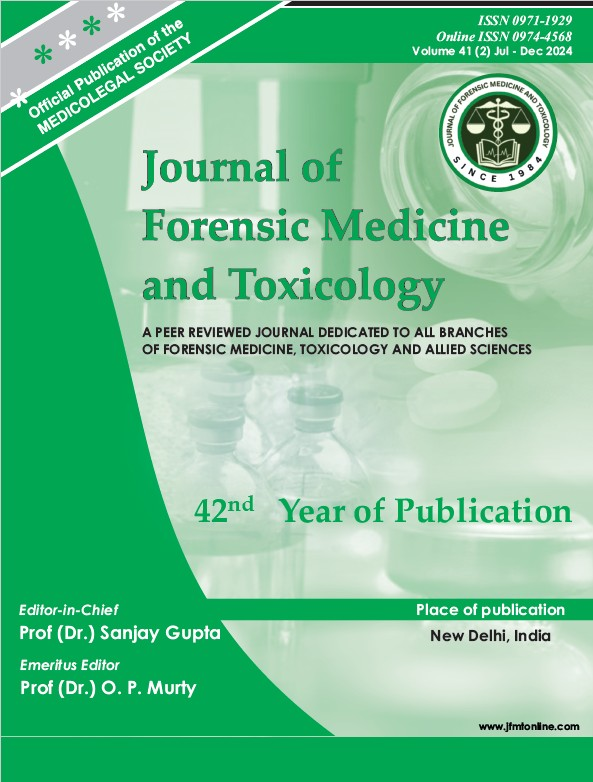A STUDY ON THE RECOVERY OF DNA FROM WASHED SEMEN SAMPLE
Keywords:
Semen, fertilizing, enzyme, commonlyAbstract
An important part of forensic analysis in cases of sexual assault is the screening of clothes and bedding items for seminal fluids. Sometimes, without knowing the importance of these evidences, the victims do the laundry or wash the clothes after sexual abuse before the police have a chance to seize them for forensic investigation. Most of the time, washed clothes are not tested either because of time delays or for the reason that any detectable DNA will not result after washing. The purpose of this study was to test whether viable amounts of DNA could be obtained from laundered semen stained clothing, despite multiple washings. In the present work, samples were collected from volunteer donors. Cotton gauze was stained with semen and after several washes from tap water and detergent; preliminary screening of seminal stain is done using the Acid Phosphatase (AP) test. DNA was extracted using the phenol - chloroform method and quantified using RT PCR. The sensitivity and stability of the AP test decreased after each successive wash and the number of spermatozoa was found to be less than half after each successive wash. The findings of this study suggest that evidence retrieval should be included in the investigation, even though clothes have been washed multiple times in sexual offenses.
Downloads
References
Virkler K, Lednev IK. Analysis of body fluids for forensic purposes: from laboratory testing to non destructive rapid confirmatory identification at a crime scene. Forensic Sci Int. 2009 1;188(1-3):1-17.
Crowe G, Moss D, Elliot D. The effect of laundering on the detection of acid phosphatase and spermatozoa on cotton t-shirts. Canadian Society of Forensic Science Journal. 2000; 33(1): 1-5.
Haas GG Jr, D’Cruz OJ. ABH blood group antigens in human semen. Am J Reprod Immunol Microbiol. 1988 ;16(1):28-36.
Ward WS, Coffey DS. DNA packaging and organization in mammalian spermatozoa: comparison
with somatic cells. Biol Reprod. 1991;44(4):569-74.
Farmen RK, Cortez P, Froyland ES. Spermatozoa recovered on laundered clothes. Forensic Science International Genetics .2008; 1(1): 418-420.
Jobin RM, Gouffe M. The persistence of seminal constituents on panties after laundering. Significance to investigations of sexual assaults. Canadian Society of Forensic Science Journal.2003; 36(1): 1-10.
Joshi UN, Subhedar SK, Saraf DK. Effect of water immersion on seminal stains on cotton cloth. Forensic Sci Int. 1981 ;17(1):9-11.
Brayley-Morris H, Sorrell A, Revoir AP, Meakin GE, Court DS, Morgan RM. Persistence of DNA from laundered semen stains: Implications for child sex trafficking cases. Forensic Sci Int Genet. 2015; 19:165- 171.
Karadayi S, Moshfeghi E, Arasoglu T, Karadayi B. Evaluating the persistence of laundered semen stains on fabric using a forensic light source system, prostate-specific antigen Semiquant test and DNA recovery-profiling. Med Sci Law. 2020;60(2):122-130.




